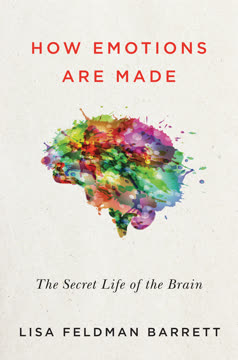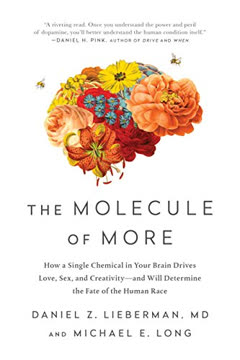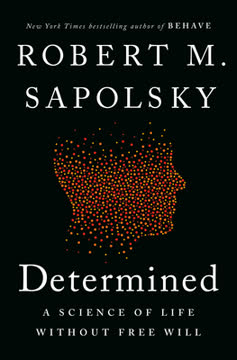نکات کلیدی
1. رفتار توسط تعاملات پیچیده ژنها، محیط و فرهنگ شکل میگیرد
ژنها عوامل خودمختاری نیستند که رویدادهای زیستی را فرماندهی کنند.
تأثیر ژنتیکی پیچیده است. در حالی که ژنها نقشی در رفتار دارند، اثرات آنها اغلب کوچک و به شدت وابسته به عوامل محیطی است. تعاملات ژن-محیط به این معناست که یک ژن میتواند در زمینههای مختلف اثرات متفاوتی داشته باشد. برای مثال:
- ژن MAOA، که زمانی به عنوان "ژن جنگجو" شناخته میشد، تنها در افرادی که در کودکی مورد سوءاستفاده قرار گرفتهاند، خشونت را افزایش میدهد.
- ژن DRD4، که با جستجوی نوآوری مرتبط است، بسته به زمینه فرهنگی اثرات متفاوتی دارد.
عوامل فرهنگی حیاتی هستند. فرهنگ نحوه بیان ژنها و تأثیر عوامل محیطی بر رفتار را شکل میدهد. برخی از تأثیرات فرهنگی کلیدی شامل موارد زیر است:
- جهتگیریهای جمعگرایانه در مقابل فردگرایانه
- نابرابری اقتصادی-اجتماعی
- باورهای مذهبی و ایدئولوژیک
- تجربیات تاریخی از درگیری یا همکاری
2. ساختار و عملکرد مغز در طول زندگی تکامل مییابد و بر رفتار تأثیر میگذارد
به طور حیاتی، آخرین ناحیه مغز که به طور کامل بالغ میشود (از نظر تعداد سیناپس، میلینسازی و متابولیسم) قشر پیشپیشانی است که تا اواسط دهه بیست به طور کامل فعال نمیشود.
نوروپلاستیسیته مداوم است. مغز در پاسخ به تجربیات و ورودیهای محیطی به تغییر و تطبیق ادامه میدهد. جنبههای کلیدی نوروپلاستیسیته شامل موارد زیر است:
- هرس و تقویت سیناپسی
- تشکیل نورونهای جدید (نوروجنسیس) در برخی نواحی مغز
- تغییرات در میلینسازی که بر سرعت انتقال سیگنال تأثیر میگذارد
دورههای بحرانی وجود دارند. برخی از پنجرههای توسعهای به ویژه برای شکلگیری ساختار و عملکرد مغز مهم هستند:
- اوایل کودکی: تشکیل و هرس سریع سیناپسها
- نوجوانی: بلوغ قشر پیشپیشانی و سیستمهای تنظیم عاطفی
- بزرگسالی: پلاستیسیته مداوم، اما با سرعتی کندتر از دورههای قبلی
3. هورمونها نقش پیچیدهای در شکلگیری رفتار اجتماعی و خشونت دارند
تستوسترون ما را بیشتر مایل به انجام آنچه برای دستیابی و حفظ وضعیت لازم است، میکند.
زمینه کلیدی است. هورمونهایی مانند تستوسترون و اکسیتوسین اثرات ساده و جهانی بر رفتار ندارند. تأثیر آنها به زمینه اجتماعی و تفاوتهای فردی بستگی دارد:
- تستوسترون میتواند رفتار اجتماعی را افزایش دهد اگر این چیزی باشد که برای کسب وضعیت لازم است.
- اکسیتوسین پیوند درونگروهی را تقویت میکند اما میتواند خصومت نسبت به گروههای بیرونی را افزایش دهد.
روابط هورمون-رفتار دوطرفه هستند. رفتار میتواند بر سطح هورمونها تأثیر بگذارد همانطور که هورمونها بر رفتار تأثیر میگذارند:
- برنده شدن در یک رقابت سطح تستوسترون را افزایش میدهد.
- پیوند اجتماعی سطح اکسیتوسین را افزایش میدهد.
4. تجربیات کودکی تأثیرات ماندگاری بر رفتار و عملکرد مغز در بزرگسالی دارند
سختیهای کودکی احتمال داشتن (الف) افسردگی، اضطراب و/یا سوءمصرف مواد؛ (ب) قابلیتهای شناختی مختل، به ویژه مربوط به عملکرد قشر پیشپیشانی؛ (ج) کنترل تکانه و تنظیم عاطفی مختل؛ (د) رفتار ضد اجتماعی، از جمله خشونت؛ و (ه) روابطی که سختیهای کودکی را تکرار میکنند (مثلاً ماندن با یک شریک سوءاستفادهگر) را افزایش میدهد.
استرس اولیه اثرات بلندمدتی دارد. سختیهای کودکی میتواند به تغییرات ماندگار در ساختار و عملکرد مغز منجر شود:
- هورمونهای استرس بالا بر توسعه هیپوکامپ و قشر پیشپیشانی تأثیر میگذارند.
- پردازش عاطفی تغییر یافته در آمیگدالا
تجربیات مثبت نیز مهم هستند. محیطهای حمایتی و پرورشدهنده در کودکی توسعه سالم مغز و مقاومت را ترویج میکنند:
- دلبستگی ایمن تنظیم عاطفی بهتری را ترویج میکند.
- محیطهای غنی و تحریککننده توسعه شناختی را افزایش میدهند.
5. نوجوانی دوره بحرانی برای توسعه مغز و الگوهای رفتاری است
اگر تا نوجوانی سیستمهای لیمبیک، خودمختار و غدد درونریز به طور کامل فعال باشند در حالی که قشر پیشپیشانی هنوز در حال کار بر روی دستورالعملهای مونتاژ است، ما توضیح دادهایم که چرا نوجوانان اینقدر ناامیدکننده، عالی، احمقانه، تکانشی، الهامبخش، مخرب، خودمخرب، ایثارگر، خودخواه، غیرممکن و تغییر دهنده جهان هستند.
بلوغ قشر پیشپیشانی کلیدی است. توسعه دیرهنگام قشر پیشپیشانی نسبت به سایر نواحی مغز بسیاری از رفتارهای نوجوانان را توضیح میدهد:
- افزایش ریسکپذیری و جستجوی حس
- واکنشپذیری عاطفی بالا
- دشواری در کنترل تکانه و برنامهریزی بلندمدت
تأثیر همسالان به اوج میرسد. نوجوانان به ویژه به تأثیر اجتماعی حساس هستند:
- حساسیت افزایش یافته به طرد اجتماعی
- انگیزه قوی برای تأیید همسالان
- ریسکپذیری بیشتر در حضور همسالان
6. تفاوتهای فرهنگی به طور قابل توجهی بر رفتار، شناخت و هنجارهای اجتماعی تأثیر میگذارند
تأثیر فرهنگ بسیار زیاد است.
ادراک و شناخت متفاوت است. فرهنگهای مختلف نحوه پردازش اطلاعات و ادراک جهان را شکل میدهند:
- فرهنگهای فردگرا بر اشیاء مرکزی در صحنههای بصری تمرکز میکنند.
- فرهنگهای جمعگرا به اطلاعات زمینهای بیشتر توجه میکنند.
رفتار اجتماعی تحت تأثیر فرهنگی است. هنجارهای فرهنگی تعاملات بین فردی و قضاوتهای اخلاقی را شکل میدهند:
- مفاهیم انصاف و عدالت در فرهنگهای مختلف متفاوت است.
- بیان و تنظیم عاطفی متفاوت است.
تکامل فرهنگی مداوم است. فرهنگها به تغییر و تطبیق ادامه میدهند:
- جهانیسازی منجر به اختلاط و ترکیب فرهنگی میشود.
- تغییرات تکنولوژیکی شیوهها و هنجارهای فرهنگی جدیدی ایجاد میکنند.
7. تکامل رفتار انسانی را شکل داده است، اما ما اغلب از پیشبینیهای تکاملی منحرف میشویم
ما به طور طبیعی به شدت گیج هستیم—به طور ملایم چندهمسری، در جایی بینابین شناور.
سیستمهای جفتگیری انسانی انعطافپذیر هستند. برخلاف بسیاری از گونهها با الگوهای جفتگیری ثابت، انسانها ترکیبی از تمایلات تکهمسری و چندهمسری را نشان میدهند:
- اکثر فرهنگها چندهمسری را مجاز میدانند، اما اکثر افراد به صورت اجتماعی تکهمسر هستند.
- دودیسی جنسی در انسانها بین گونههای جفتپیوندی و مسابقهای میانه است.
همکاری فراتر از خویشاوندی گسترش مییابد. انسانها سطوح بیسابقهای از همکاری با غیرخویشاوندان نشان میدهند:
- جوامع بزرگمقیاس نیاز به همکاری بین غریبهها دارند.
- نهادهای فرهنگی همکاری فراتر از گروههای خویشاوندی فوری را ترویج میکنند.
8. همکاری و نوعدوستی از ترکیبی از انتخاب فردی، خویشاوندی و گروهی ناشی میشود
حیوانات برای خیر گونه رفتار نمیکنند. آنها برای به حداکثر رساندن تعداد نسخههای ژنهای خود که به نسل بعدی منتقل میشوند، رفتار میکنند.
چندین سطح انتخاب عمل میکنند. رفتار انسانی توسط:
- انتخاب فردی: صفاتی که به بقا و تولیدمثل شخصی سود میرسانند.
- انتخاب خویشاوندی: کمک به خویشاوندانی که ژنها را به اشتراک میگذارند.
- نوعدوستی متقابل: همکاری با غیرخویشاوندان برای سود متقابل.
- انتخاب گروهی: صفاتی که به گروه سود میرسانند، حتی به هزینه فردی.
شیوههای فرهنگی انتخاب را تحت تأثیر قرار میدهند. فرهنگ انسانی فشارهای انتخابی جدیدی ایجاد میکند:
- هنجارهای اجتماعی میتوانند رفتارهای سودمند گروهی را ترویج کنند.
- نهادهایی مانند دین و قانون همکاری را اجرا میکنند.
9. علوم اعصاب زیربنای زیستی بهترین و بدترین رفتارهای ما را آشکار میکند
مغز جایی نیست که یک رفتار "آغاز" شود. این فقط مسیر مشترک نهایی است که همه عوامل در فصلهای آینده در آن همگرا میشوند و رفتار را ایجاد میکنند.
مدارهای عصبی برای اخلاق و همدلی. نواحی کلیدی مغز درگیر در رفتار اجتماعی:
- قشر پیشپیشانی: کنترل اجرایی و استدلال اخلاقی
- قشر سینگولیت قدامی: همدلی و نظارت بر تعارض
- آمیگدالا: پردازش عاطفی و پاسخ ترس
پایههای زیستی خشونت و پرخاشگری. عوامل عصبی و هورمونی کمک میکنند:
- عدم تعادل بین کنترل پیشپیشانی و واکنشپذیری عاطفی لیمبیک
- تغییرات در سیگنالدهی سروتونین و دوپامین
- استرس اولیه زندگی که بر توسعه مغز تأثیر میگذارد
پلاستیسیته امکان تغییر را فراهم میکند. درک نوروبیولوژی رفتار امکاناتی برای مداخله ایجاد میکند:
- درمانهای هدفمند برای تقویت عملکرد پیشپیشانی یا کاهش واکنشپذیری آمیگدالا
- مداخلات اجتماعی و محیطی برای ترویج توسعه سالم مغز
اراده آزاد منحصر به فرد انسانها دانلود رایگان PDF کتاب Behave 2023 زیستشناسی انسانها در بهترین و بدترین حالت توسط رابرت ساپولسکی.
آخرین بهروزرسانی::
FAQ
What's Behave: The Biology of Humans at Our Best and Worst about?
- Exploration of Human Behavior: The book examines the biological underpinnings of human behavior, focusing on aggression, violence, and prosocial actions. It explores how factors like neurobiology and hormones influence our actions.
- Interdisciplinary Approach: Robert M. Sapolsky integrates insights from neurobiology, psychology, and sociology to provide a comprehensive understanding of human behavior. He argues that behavior requires a multifaceted perspective.
- Contextual Understanding: Sapolsky emphasizes that context is crucial in determining whether a behavior is seen as good or bad, highlighting how the same action can be interpreted differently based on circumstances.
Why should I read Behave: The Biology of Humans at Our Best and Worst?
- Insightful Analysis: Sapolsky offers a deep dive into the complexities of human behavior, making it valuable for those interested in psychology, biology, or social sciences. His engaging style makes complex concepts accessible.
- Relevance to Current Issues: The book addresses societal issues like violence, morality, and empathy, providing a scientific framework to understand these phenomena, making it timely in today's context.
- Encourages Critical Thinking: By challenging simplistic views of behavior, Behave encourages readers to think critically about human motivations, promoting a nuanced understanding of morality and ethics.
What are the key takeaways of Behave: The Biology of Humans at Our Best and Worst?
- Biology and Behavior Interconnected: Biological factors, including hormones and brain structure, significantly influence behavior. Sapolsky argues against distinguishing between biological, psychological, or cultural aspects of behavior.
- Context Matters: The interpretation of behaviors as good or bad is heavily dependent on context. Sapolsky notes that we often hate the wrong kind of violence but love it in the right context.
- Complexity of Human Nature: Human behavior is influenced by genetics, environment, and social learning, requiring a holistic view rather than isolated components.
What are the best quotes from Behave: The Biology of Humans at Our Best and Worst and what do they mean?
- “The opposite of love is not hate; its opposite is indifference.” This highlights the importance of empathy and engagement, suggesting that apathy can be more damaging than active dislike.
- “We are always shadowed by the threat of other humans harming us.” Reflects the inherent risks in human interactions and the potential for violence, underscoring the need to understand aggression's roots.
- “The more we consume, the hungrier we get.” Addresses the paradox of modern life, where increased access to pleasure can lead to greater dissatisfaction, suggesting insatiable desires can have negative consequences.
How does Robert M. Sapolsky explain aggression in Behave?
- Biological Basis of Aggression: Hormones like testosterone and neurobiological factors contribute to aggressive behavior. Testosterone amplifies preexisting tendencies rather than directly causing aggression.
- Contextual Triggers: Aggression often responds to specific social contexts or challenges, with testosterone levels rising in response to social challenges, increasing aggressive behavior likelihood.
- Learning and Experience: Aggression is shaped by social learning and past experiences, with learned behaviors playing a significant role in future aggression.
What role do hormones play in human behavior according to Behave?
- Influence of Testosterone: Testosterone amplifies existing tendencies rather than causing aggression outright, with its actions being contingent and amplifying.
- Oxytocin and Social Bonds: Oxytocin fosters social bonding and prosocial behavior but also promotes in-group favoritism, making us more prosocial to Us and worse to everyone else.
- Stress Hormones: Chronic stress hormones impair cognitive function and emotional regulation, leading to impulsive and aggressive behaviors, affecting decision-making and empathy.
How does Behave address the concept of free will?
- Skepticism of Free Will: Sapolsky doubts traditional free will, suggesting behaviors are influenced by biological and environmental factors beyond individual control, leading to more compassionate views.
- Complex Interplay of Factors: Behavior results from genetics, hormones, and social context, making it difficult to attribute actions solely to free will.
- Implications for Justice: This perspective challenges moral culpability, suggesting understanding behavior's biological basis can lead to more effective interventions than punitive measures.
What does Robert M. Sapolsky say about the effects of childhood adversity in Behave?
- Long-term Consequences: Childhood adversity links to negative outcomes in adulthood, including mental health issues and antisocial behavior, with multiple adversities dimming chances of a happy adulthood.
- Biological Mechanisms: Early-life stressors elevate glucocorticoid levels, impairing brain development and function, increasing anxiety, depression, and aggression risks.
- Resilience Factors: Despite risks, many individuals with childhood adversity do not develop significant issues, with supportive relationships mitigating adversity effects.
How does Behave explain the relationship between empathy and behavior?
- Empathy as a Complex Emotion: Empathy involves emotional and cognitive components, allowing understanding and sharing of others' feelings, leading to prosocial behavior but can be overwhelming.
- Neurobiological Underpinnings: Brain regions like the anterior cingulate and insula activate when witnessing others in pain, with regulation of adverse empathic emotions leading to prosocial actions.
- Adolescent Empathy: Adolescents experience heightened empathy, leading to positive and negative outcomes, with empathic hyperarousal sometimes hindering effective action.
How does Behave address the impact of culture on behavior?
- Cultural Influences on Behavior: Cultural norms and values shape behaviors, including aggression and prosocial actions, with culture shaping how and where we look at the world.
- Variability Across Cultures: Behaviors acceptable in one culture may differ in another, with moral judgments differing cross-culturally, crucial for addressing global issues.
- Cultural Context in Empathy: Cultural background affects empathic responses and social interactions, with oxytocin's actions depending dramatically on context, influencing how we relate to others.
How does Behave connect behavior to evolutionary biology?
- Evolutionary Perspective on Behavior: Behaviors are understood through evolution, with traits enhancing survival and reproduction favored over time.
- Kin Selection and Altruism: Behaviors promoting relatives' survival can be advantageous for passing on shared genes, illustrating altruism's evolutionary basis.
- Cultural Evolution: Biological traits evolve, and cultural traits change over time, influenced by environmental pressures and social dynamics.
How does Behave relate to current societal issues?
- Understanding Violence and Aggression: Insights into biological and environmental factors contributing to violence and aggression, essential for reducing violence and promoting peace.
- Mental Health Implications: Understanding biological basis of mental health issues, advocating for compassionate treatment approaches, informing policies and practices.
- Promoting Empathy and Cooperation: Emphasizes fostering empathy and cooperation in addressing societal challenges, understanding biological foundations to create a compassionate society.
نقد و بررسی
کتاب رفتار رفتار انسان را از دیدگاههای زیستشناسی، تکاملی و فرهنگی بررسی میکند. ساپولسکی با ترکیب تحقیقات در زمینهی علوم اعصاب، هورمونها، ژنتیک و محیط، توضیح میدهد که چرا انسانها به شیوهای که عمل میکنند رفتار میکنند. این کتاب به خاطر گسترهی جامع، سبک نوشتاری جذاب و طنز ساپولسکی مورد تحسین قرار گرفته است. در حالی که برخی از منتقدان آن را پیچیده و گاهی جانبدارانه یافتند، بسیاری آن را اثری پیشگام میدانند که دیدگاههای سادهانگارانه دربارهی طبیعت انسان را به چالش میکشد. ساپولسکی بر پیچیدگی رفتار تأکید میکند و با استدلال علیه توضیحات تکعلتی، به تعامل بین زیستشناسی و محیط در شکلگیری رفتارهای انسانی اشاره میکند.
Similar Books




















